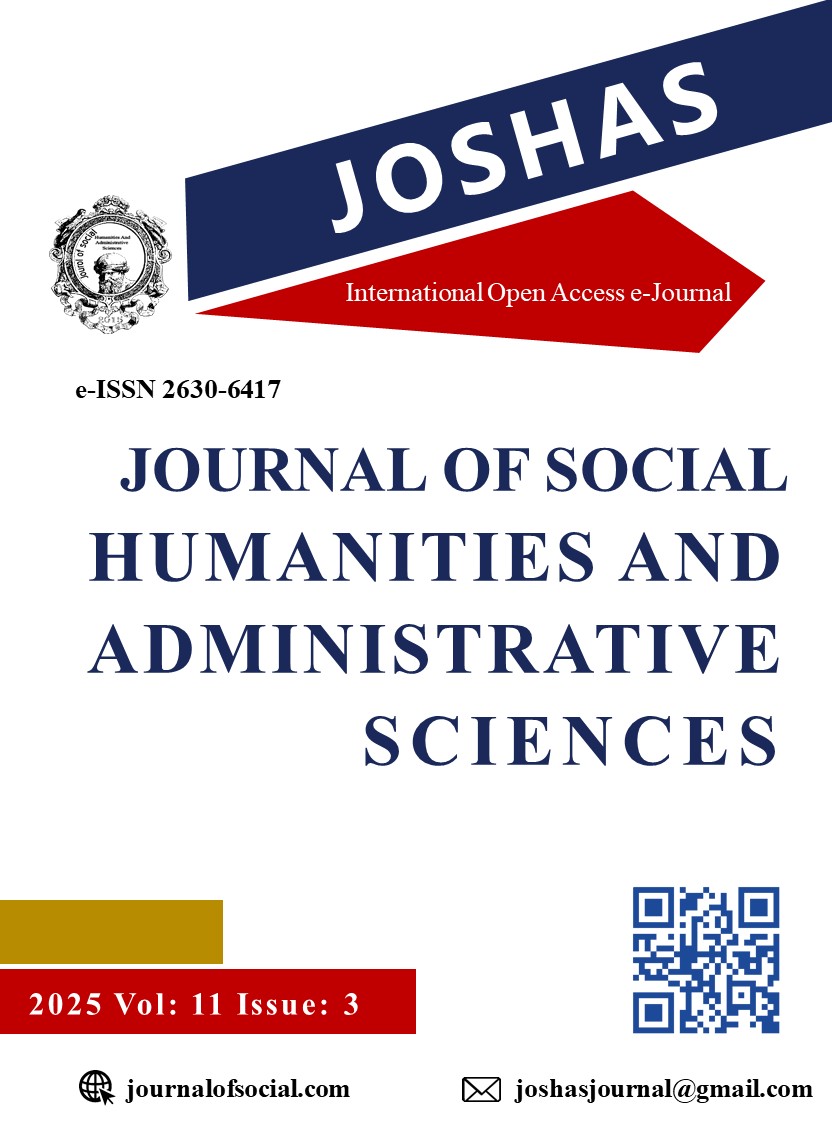Author :
Abstract
Sanatım üretim süreci her sanatçı için farklı ve karmaşık bir yapıda olabilir. Bu durum içinde öznelliği ve özgünlüğü de kapsamaktadır. 1960’lardan sonra sanatçıların üretimleri algı boyutlarını değiştirmiş ve daha çok eylemsel sürece odaklanmalarını da sağlamıştır. İzleyici ile sanatsal üretimlerin karşılıklı ilişkide olması durumu sanat mekânına dair yerleşik algının da değişimine yol açmıştır. Sanat alanında mekâna yüklenen anlamların değişmesi ve izleyicinin çalışmalara mekân bağlamında katılması durumu bu çalışmanın konusu olan Satoru Hoshino’nun mekânsal seramiklerinde de söz konusudur. Genel bir değerlendirme ile sanatçı dünya çapında geniş ölçekli heykelleri ve mekânla bütünleşmiş enstalasyonlarıyla bilinmektedir. Çalışmada, sanatçının seramik eserleri mekân bağlamında değerlendirilmiştir. Hoshino’nun seramik sanatının çarpıcı örneklerini içinde barındıran büyük ölçekli enstalasyonları sergileme mekânlarına özgün üretimlerle ortaya çıkmaktadır. Sanatçının bu çalışmaları yapım, uygulama ve montaj aşamalarında oldukça yoğun emek gerektirmektedir. Satoru Hoshino’nun mekânsal seramikleri, sanatçının sezgisel yaratım sürecinin bir yansıması olarak şekillenir. Doğayla kurduğu organik ilişki, el ile malzeme arasındaki doğrudan etkileşim ve rastlantısallığa verdiği alan, eserlerine dinamik ve akışkan bir karakter kazandırır. Hoshino’nun seramik anlayışı, önceden belirlenmiş formlardan ziyade, yaratım sürecinde şekillenen, mekâna uyum sağlayan ve izleyiciyle doğrudan ilişki kuran eserler üretmeye dayanır. Bu yaklaşım, seramiği sadece bir nesne olmaktan çıkarıp, mekânsal bir deneyime dönüştürerek izleyiciyi içine çeken bir sanat pratiği sunar. Sonuç olarak, Hoshino’nun sezgisel süreci, onun seramik sanatına getirdiği yenilikçi bakış açısını vurgularken, malzemenin doğasına duyduğu derin saygıyı ve seramiğin sınırlarını zorlayan sanatsal yaklaşımını gözler önüne serer. Ayrıca parçadan bütüne elle şekillendirilmiş seramik parçalardan oluşan bu enstalasyonları izleyiciler içinde bir deneyim alanı olarak değerlendirmek mümkündür.
Keywords
Abstract
The art production process can be different and complex for each artist. This also includes subjectivity and originality. After the 1960s, the artists' productions changed the dimensions of perception and allowed them to focus more on the action process. The mutual relationship between the audience and artistic productions also led to a change in the established perception of the art space. The changing meanings attributed to space in the field of art and the audience's participation in the works in the context of space are also the case in the spatial ceramics of Satoru Hoshino, which is the subject of this study. In a general evaluation, the artist is known worldwide through his large-scale sculptures and installations integrated with space. In the study, the artist's ceramic works are evaluated in the context of space. Hoshino's large-scale installations, which include striking examples of ceramic art, emerge with original productions for exhibition spaces. These works of the artist require quite intensive labor in the stages of production, application and assembly. Satoru Hoshino's spatial ceramics take shape as a reflection of the artist's intuitive creation process. The organic relationship she establishes with nature, the direct interaction between the hand and the material, and the space she gives to randomness give her works a dynamic and fluid character. Hoshino’s understanding of ceramics is based on producing works that take shape during the creative process, adapt to the space, and establish a direct relationship with the viewer, rather than predetermined forms. This approach transforms ceramics from being just an object to a spatial experience, offering an art practice that draws the viewer in. As a result, Hoshino’s intuitive process emphasizes her innovative perspective on ceramic art, while revealing her deep respect for the nature of the material and her artistic approach that pushes the boundaries of ceramics. In addition, it is possible to evaluate these installations, which consist of ceramic pieces shaped by hand from piece to whole, as an area of experience for the viewer.





